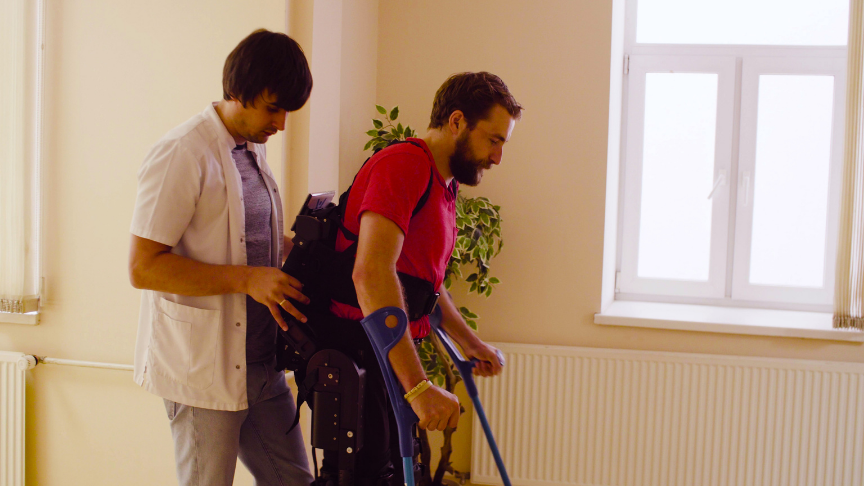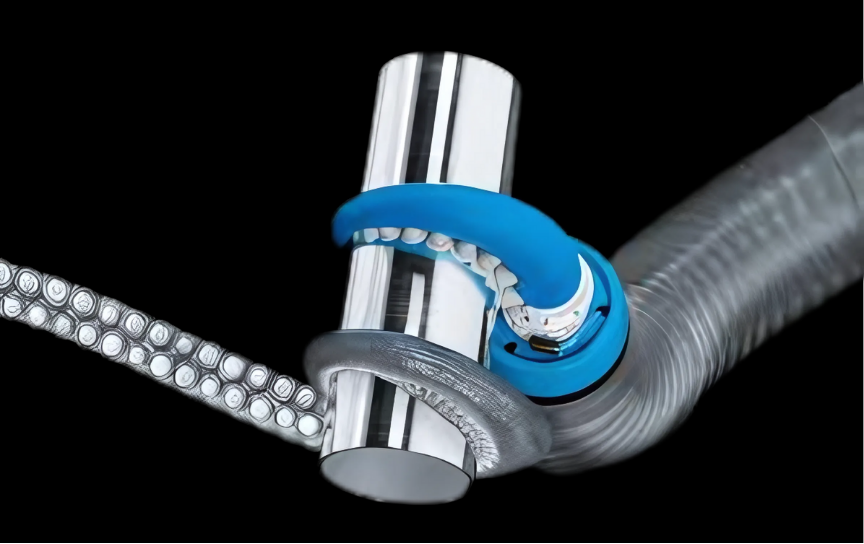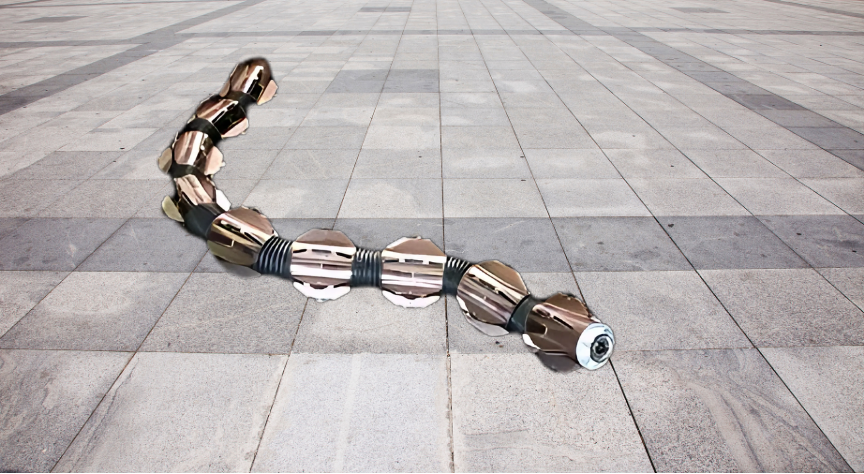Biomimicry is about learning from nature to solve human problems. This article dives into how innovations inspired by nature are advancing fields like robotics, healthcare, and environmental monitoring.
Table of Contents
- Key Takeaways
- Biomimicry in Robotics: An Overview
- Key Principles of Biomimetic Design
- Compliance and Adaptability
- Safety and Interaction
- Specific Biomimetic Strategies in Robotics
- Mimicking Animal Movements
- Plant-Inspired Mechanisms
- Marine Life Inspirations
- Fusion of Soft Robotics and Traditional Mechanical Design
- Enhancing Versatility and Performance
- Challenges and Solutions
- Applications of Biomimetic Soft Robots
- Healthcare Innovations
- Environmental Monitoring
- Biomimetic Soft Robotics in Manufacturing
- Exploration with Soft Robotics
- Human-Robot Interaction
- Advantages of Biomimicry in Soft Robotics
- Enhanced Safety
- Greater Adaptability
- Energy Efficiency
- Challenges and Future Directions
- Material Durability and Maintenance
- Precision and Control
- Ethical Challenges and Considerations
- Emerging Trends and Innovations
- Summary
- Get in Touch
Key Takeaways
- Biomimetic robotics utilizes nature-inspired designs to enhance robot capabilities, emphasizing compliance, adaptability, and safety for efficient interaction in diverse environments.
- Specific biomimetic strategies, including mimicking animal movements and plant mechanisms, significantly improve the mobility and functionality of robots, leading to advancements in healthcare and environmental monitoring.
- The fusion of soft robotics with traditional mechanical designs enhances versatility and safety, while emerging challenges in control and material durability highlight the need for ongoing innovation in the field.
Biomimicry in Robotics: An Overview

Biomimicry in robotics draws from nature’s designs to enhance robotic capabilities, leading to innovative solutions. Nature, having refined its designs over millions of years, offers a treasure trove of inspiration for advancements in robotics. Studying natural systems at the biomimicry institute allows robotic engineers to design more adaptable and efficient robots, capable of handling complex tasks with greater precision and flexibility.
Biomimetic robotics employs strategies that replicate the mechanics and functionality found in nature to enhance robotic capabilities. Observational studies of animals and plants are fundamental in developing these robots, allowing engineers to emulate the forms, functions, and systems found in biological organisms to create innovative engineering solutions.
Key Principles of Biomimetic Design
The journey into biomimetic robotics begins with understanding its core principles. These principles are compliance, adaptability, and safety, which are crucial for enhancing interaction with fragile objects and environments. Soft robotics utilizes flexible materials and structures, allowing robots to adapt to environments with high compliance and safety.
These principles enable the creation of robots that can interact naturally and safely with their environments and humans. Let’s delve deeper into two of these key principles: compliance and adaptability, and safety and interaction.
Compliance and Adaptability
Compliance in soft robotics allows robots to safely interact with human environments and adapt to varying conditions. By utilizing compliant materials that enable them to deform and adapt to various shapes, soft robots can navigate complex environments more effectively. This adaptability is crucial for robots that need to operate in unpredictable settings, promoting efficient navigation and interaction.
For example, robots that imitate the movements of animals, such as legged robots, can achieve more efficient navigation in complex terrains. Hybrid robotic systems can navigate these environments and interact safely with humans while maintaining performance, showcasing the significant potential of combining compliance and adaptability in soft robotics.
Safety and Interaction
Biomimetic designs in soft robotics ensure that robots can perform delicate tasks without causing harm to humans or fragile objects. The safety of soft robots is significantly improved due to their ability to absorb impacts, making them suitable for direct human interaction. This increased safety is a significant advantage in applications where robots work closely with humans.
Soft-bodied robots can change their shape and stiffness, allowing for safer interactions in unpredictable environments. Applying biomimetic principles enables these robots to perform delicate tasks with increased safety, enhancing human-robot interactions and opening new avenues for collaborative work with soft bodies.
Specific Biomimetic Strategies in Robotics

Biomimetic strategies in robotics involve mimicking the intricate designs and functionalities found in nature. These strategies can significantly enhance the mobility and manipulation capabilities of robots. By emulating biological organisms, engineers can develop robots that perform more efficiently and adaptively.
Let’s explore three specific strategies in biomimetic robotics: mimicking animal movements, plant-inspired mechanisms, and marine life inspirations. Each of these strategies offers unique insights and practical applications that can transform the field of robotics.
Mimicking Animal Movements
Biomimetic soft robots are inspired by the movement patterns of natural organisms, enabling improved efficiency in various tasks. For example, robots designed to mimic the climbing ability of geckos illustrate this approach. The study of geckos’ adhesive feet has led to the development of robots that can climb walls and ceilings using similar adhesive properties. Engineers have replicated the microscopic structures found on gecko feet, enabling robots to achieve strong yet reversible adhesion on various surfaces, enhancing operational capabilities and expanding potential applications.
Plant-Inspired Mechanisms
Plants, with their unique mechanisms, offer fascinating insights for soft robotics. Mechanisms inspired by plants, like the Venus flytrap’s snapping action, are employed in soft grippers for enhanced grasping capabilities. These plant-inspired mechanisms are increasingly utilized in robotics to enhance performance and efficiency.
The ability of plants to grow and adapt to their environment can be emulated in robots designed to navigate and interact with complex settings. Studying natural systems enables engineers to develop bioinspired materials and fabrication techniques that enhance soft robot functionality within a biological system.
Marine Life Inspirations
Marine life, with its diverse and adaptable creatures, serves as a rich source of inspiration for soft robotics. Marine creatures like octopuses and jellyfish inspire the development of flexible, underwater robots that can maneuver precisely through challenging environments, showcasing the significant potential of marine life inspirations in robotics.
Fusion of Soft Robotics and Traditional Mechanical Design
The fusion of soft robotics and traditional mechanical design is a pioneering approach in the field of robotics. By leveraging both soft materials and rigid structures, hybrid robots enhance flexibility and functionality. This integration can lead to the creation of robots that are versatile and efficient, combining the best of both worlds.
Traditional mechanical engineering design employs rigid materials and precise engineering for building robust, high-performance robots. Incorporating design considerations and biomimetic principles allows engineers to develop robots that are high-performing, adaptable, and safe for various applications.
Enhancing Versatility and Performance
Soft robots often require advanced models of mechanics and power supply to improve their functionality. The fusion of soft robotics and traditional mechanical design increases versatility and safety in robotic applications. This enhanced versatility allows robots to perform a broad range of tasks, from delicate material handling to complex industrial operations.
Integrating soft materials with traditional mechanical designs enables the created robots that are more adaptable and safer for human interaction. This fusion represents a significant step forward in human innovation, showcasing the potential for further development and environmental benefits.
Challenges and Solutions
Integrating soft and rigid components in robotics poses challenges related to material compatibility. Matching the mechanical properties and material properties of different pliable materials is crucial to minimize stress and enhance performance in soft robotics. Developing soft robotics often necessitates complex manufacturing processes that can complicate production.
Addressing these challenges requires innovative approaches to materials, control mechanisms, and operational environments. Future research must focus on improving manufacturing techniques, enhancing material performance, and developing better control systems to overcome current challenges and highlight areas where soft robots can excel over traditional designs.
Applications of Biomimetic Soft Robots

Biomimetic robots are applied in various fields, showcasing their versatility and potential. These robots have been successfully implemented in healthcare, exploration, human-robot interaction, and more. The ability of hybrid robotic systems to enhance the usability of soft robotics in real-world tasks highlights their significant potential.
Let’s explore some specific applications of biomimetic soft robots. Each of these fields benefits from the unique capabilities of these innovative robots.
Healthcare Innovations
Soft robotics is revolutionizing healthcare by providing gentle handling capabilities that enhance patient care and treatment. These robots excel in sensitive tasks like minimally invasive surgeries, navigating the human body’s intricate structures safely and comfortably.
A prime example of this is the development of soft prosthetics and wearable exoskeletons, which offer natural movement and comfort over traditional rigid devices. Additionally, a soft robotic glove aids stroke patients in regaining hand function with adaptable support during rehabilitation. This adaptability is crucial in medical settings, ensuring patient safety and comfort.
The innovative approaches of soft robots enable safe interaction with humans and delicate environments, making them ideal for assistive devices and surgical robots where a gentle touch is essential. Hybrid robots in healthcare provide customized support in rehabilitation and assistive technologies, improving patient outcomes and comfort. These advancements not only enhance patient care but also reduce healthcare costs and promote faster recovery.
Environmental Monitoring
Soft robotics has revolutionized environmental monitoring by providing minimally invasive solutions that preserve delicate ecosystems. One notable innovation is the development of soft robotic fish that can swim alongside real fish, gathering data without disturbing their natural habitat. This approach enhances sustainable conservation efforts, allowing for effective monitoring and interaction with marine environments.
Biomimetic soft robots, inspired by biological principles, excel in adapting to challenging environments. A prime example is the octopus-inspired soft robot, which mimics the flexibility and dexterity of octopus arms. These robots can navigate tight spaces and perform intricate tasks, such as underwater exploration and delicate object handling. Similarly, jellyfish-inspired robots utilize soft, pulsating movements for efficient and gentle locomotion, making them ideal for marine research and environmental assessments.
These innovations highlight the significant impact and potential of soft robotics across various fields, underscoring their role in advancing technology and improving human life.
Biomimetic Soft Robotics in Manufacturing
In the industrial sector, biomimetic soft robotics is transforming manufacturing processes by enhancing safety and efficiency. Soft robots are integrated into assembly lines to handle delicate components, reducing the risk of damage and improving productivity. Utilizing artificial muscles and advanced control systems, these robots offer precision and adaptability, making them ideal for intricate tasks.
Soft grippers, a pivotal innovation, are particularly beneficial in food processing and electronics assembly, where handling fragile items with care is essential. These grippers, inspired by biomimetic principles, are designed to manipulate delicate components without causing harm, highlighting the potential for human innovation and technological advancement.
The application of soft robotics in manufacturing not only boosts productivity but also provides human workers with innovative tools that enhance workplace safety. This integration exemplifies the potential for further development in soft robotics, paving the way for sustainable solutions and advancements in industrial automation.
Exploration with Soft Robotics
Soft robotics has transformed exploration with its adaptable designs. For example, space mission grippers handle diverse objects in harsh environments, thanks to their ability to conform to various shapes. Underwater, marine-inspired robots navigate complex ecosystems, enhancing monitoring capabilities.
Biological organisms inspire these advancements. Snake-like robots navigate tight spaces by mimicking snake locomotion, while insect-inspired swarm robotics use simple communication strategies for complex tasks like search and rescue, demonstrating biomimicry’s transformative potential in robotics.
Human-Robot Interaction
Human-robot interaction is a vital area where soft robotics excels, offering enhanced safety and flexibility. In collaborative environments like factories and laboratories, soft robotic arms can work alongside human workers without posing a risk of injury. Their inherent safety makes them ideal for tasks involving close human contact, allowing for seamless integration into various settings.
Beyond industrial applications, soft robots serve a vital role in educational environments. They provide safe and engaging hands-on learning experiences, teaching robotics concepts without the risks associated with traditional rigid robots. This adaptability and safety in human interaction highlight the transformative potential of soft robotics in diverse fields.
Advantages of Biomimicry in Soft Robotics

Biomimetic design principles lead to the creation of soft robots that are low weight and inherently safer compared to traditional robots. These principles focus on replicating the strategies found in nature to create robots that are compliant and adaptable, allowing them to operate effectively in diverse environments.
Leveraging nature’s strategies enables biomimetic designs to create robots that can adapt, conform, and interact safely in various settings. The following subsections will explore the specific advantages of enhanced safety, greater adaptability, and energy efficiency in biomimetic soft robotics.
Enhanced Safety
The compliance of soft robots significantly enhances their safety in human-robot interactions. Rigid robots are considered dangerous for human interaction because they do not match the elastic properties of soft materials, leading to potential damage. In contrast, soft robots significantly reduce the risk of injury during interactions with humans due to their inherent design.
The soft and flexible nature of soft robots minimizes the likelihood of causing injuries during interactions with humans. These robots are increasingly integrated into manufacturing processes to enhance safety by adapting to various tasks and environments. The inherent flexibility of soft robotics allows for safer interactions, making them ideal for applications that require close human interaction.
Greater Adaptability
Adaptability is a core principle of biomimetic design, allowing robots to adjust to various environmental conditions, akin to how living organisms thrive in changing habitats. Soft robotics, inspired by the flexibility of natural organisms, allows robots to conform to their surroundings, making them ideal for diverse applications from healthcare to environmental monitoring.
The enhanced adaptability of biomimetic robots leads to improved performance and safety, enabling them to accomplish tasks in unpredictable and complex environments, thereby protecting human life by eliminating the need for humans to enter hazardous areas. This adaptability is a testament to nature’s genius and the potential for further development in the field of soft robotics.
Energy Efficiency
Nature-inspired robotic designs can lead to reduced energy consumption compared to traditional robotics. Biomimetic designs in soft robotics can lead to improved energy conservation, making them more efficient in their operations. This energy efficiency is crucial for sustainable solutions and addressing the challenges of climate change.
Advancements in soft robotics are increasingly focused on integrating energy-autonomous systems that rely on environmental energy sources. Utilizing smart materials and innovative designs allows these robots to operate with lower energy requirements, reducing environmental impact and enhancing operational efficiency.
Challenges and Future Directions

Despite the significant advancements, soft robotics presents challenges such as control and stability, material durability, and manufacturing complexity. Addressing these challenges is crucial for the further development of biomimetic soft robotics and realizing their full potential.
Future research directions in biomimetic soft robotics could focus on improving manufacturing techniques, enhancing material performance, and developing better control systems to overcome current challenges. These efforts will pave the way for more robust, efficient, and versatile soft robotic systems that can address complex human problems and provide sustainable solutions.
Material Durability and Maintenance
Soft robotics materials need to be selected to withstand environmental variations to prevent failure during use. Soft robotic materials may require additional protective layers to prevent damage from environmental factors during operation. Ensuring the durability and maintenance of these materials is essential for the long-term success of soft robotics.
Future research should focus on developing new smart materials with enhanced durability and resilience. Addressing these material challenges enables engineers to create more reliable, long-lasting soft robotic systems that operate effectively in diverse environments, even under harsh conditions, using elastic materials.
Precision and Control
Achieving precise control in soft robotics is hampered by challenges such as nonlinear actuator behavior and soft end effectors. Accurate control in soft robots often involves complex modeling to account for the unpredictable forces they encounter. Precision and controlled are critical for the functionality and reliability of soft robotic systems, particularly when considering soft actuators. The integration of advanced controls can enhance the performance of these systems.
Future research should focus on developing advanced control systems and predictive models to enhance the precision and reliability of soft robots. Overcoming these challenges allows engineers to develop more effective and adaptable soft robotic systems for a wide range of applications.
Ethical Challenges and Considerations
As biomimetic soft robotics advances, ethical considerations become crucial, especially in healthcare and environmental monitoring. Responsible deployment is essential to manage societal and environmental impacts. Concerns about privacy, security, and job displacement must be addressed through ethical guidelines. Additionally, developing sustainable materials and recycling processes can minimize the ecological footprint of these technologies, ensuring alignment with societal and environmental goals.
Emerging Trends and Innovations
Emerging trends in biomimetic soft robotics are focused on harnessing nature-inspired designs to create robots that can perform complex tasks in diverse environments. Advances in smart materials are integral to the development of biomimetic soft robots, enhancing their flexibility, adaptability, and performance in various application areas.
Innovative fabrication techniques are being explored for creating improvements in the manufacturing process of soft robotics technologies, enabling more efficient mass produce and greater design intricacies.
These current trends and innovations represent the future potential of biomimetic soft robotics, highlighting the ongoing human innovation and the limitless possibilities of nature’s genius in a nature positive way.
Summary
Biomimetic soft robotics represents a significant leap forward in the field of robotics. By mimicking nature’s time-tested designs, engineers are creating robots that are more efficient, versatile, and adaptable. These robots can safely interact with humans, adapt to various environments, and perform complex tasks with greater precision and energy efficiency.
The future of biomimetic soft robotics is bright, with ongoing research and innovations paving the way for more advanced and capable robotic systems. As we continue to explore the potential of nature-inspired designs, we can look forward to a future where technology and nature work hand in hand to solve some of the world’s most pressing challenges.
Get in Touch
Interested in learning more about how biomimicry can transform your industry? Contact us today to explore innovative solutions inspired by nature. Our team of experts is ready to help you harness the power of biomimetic design to address your unique challenges. Reach out now and discover the potential of nature-inspired innovation!
